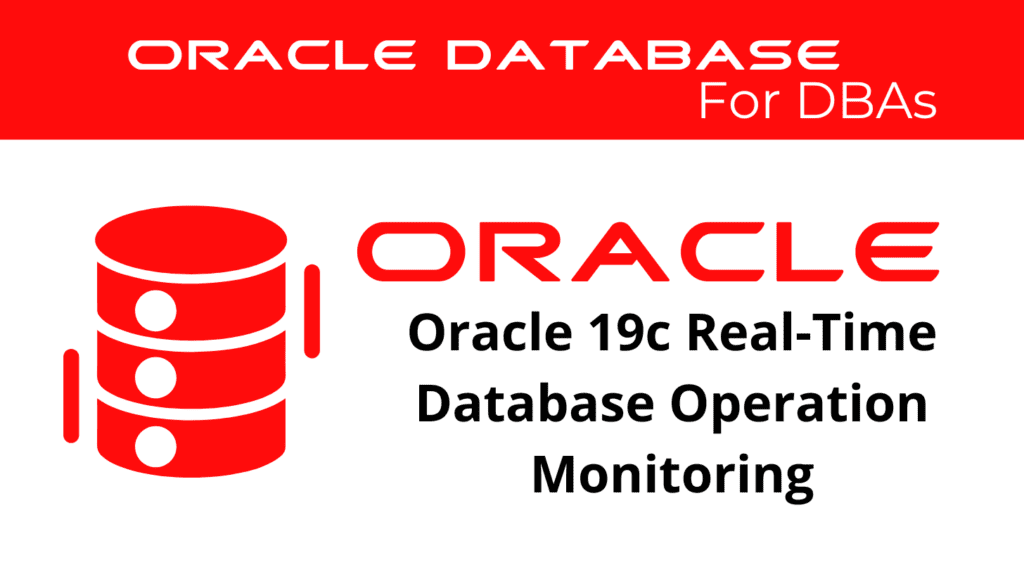
Implementing real-time database operation monitoring in Oracle 19c is a critical task for ensuring optimal database performance and reliability. Real-Time Monitoring allows database administrators to track and analyze database operations as they occur, providing insights that can lead to improved performance and faster issue resolution. This article delves into the essential aspects of Real-Time Monitoring and Database Operations, offering a comprehensive guide for effective implementation.
Understanding Real-Time Monitoring
Real-Time Monitoring is a feature in Oracle 19c that enables administrators to observe and analyze database operations in real-time. This capability is crucial for maintaining high performance and identifying issues before they escalate.
Key Features of Real-Time Monitoring
- Immediate Feedback: Provides instant insights into database operations.
- Performance Metrics: Tracks key performance indicators (KPIs) in real-time.
- Alerts and Notifications: Generates alerts for unusual activities or performance degradation.
- Comprehensive Analysis: Allows detailed analysis of ongoing database operations.
- Proactive Management: Enables proactive database management to prevent issues.
Benefits of Live Monitoring
Utilizing Live Monitoring in Oracle 19c offers several benefits:
- Enhanced Performance: By monitoring operations in real-time, administrators can quickly identify and resolve performance bottlenecks.
- Improved Reliability: Continuous monitoring helps in maintaining database reliability by promptly addressing issues.
- Operational Efficiency: RealTime Monitoring streamlines database management, leading to more efficient operations.
Implementing Real-Time Monitoring
Implementing Real-Time Monitoring in Oracle 19c involves several steps. These steps ensure that the monitoring system is set up correctly and provides accurate, useful insights.
📢 You might also like: Oracle 19c Configuring and Using Services to Monitor Database Application Performance (Category: Performance Management and Tuning)
Step-by-Step Guide to Implementing Real-Time Monitoring
Step1: Enable Real-Time Monitoring
ALTER SYSTEM SET control_management_pack_access='DIAGNOSTIC+TUNING' SCOPE=BOTH;
Step2: Configure Monitoring Parameters
ALTER SYSTEM SET statistics_level=ALL SCOPE=BOTH;
ALTER SYSTEM SET timed_statistics=TRUE SCOPE=BOTH;
Step3: Set Up Alerts and Notifications
BEGIN
DBMS_SERVER_ALERT.SET_THRESHOLD(
metrics_id => DBMS_SERVER_ALERT.ELAPSED_TIME_PER_CALL,
warning_operator => DBMS_SERVER_ALERT.OPERATOR_GE,
warning_value => '300',
critical_operator => DBMS_SERVER_ALERT.OPERATOR_GE,
critical_value => '500',
observation_period => 1,
consecutive_occurrences => 1,
instance_name => NULL,
object_type => NULL,
object_name => NULL
);
END;
Step4: Monitor Database Operations
SELECT * FROM v$session_longops WHERE time_remaining > 0;
Step5: Analyze Performance Metrics
SELECT * FROM dba_hist_sysmetric_summary WHERE metric_name='DB Time';
Database Operations Monitoring
Database Operations Monitoring involves tracking the various operations performed within the database. This includes transactions, queries, and other database activities that impact performance and reliability.
Key Components of Operations Monitoring
- Transaction Monitoring: Tracks the performance and status of database transactions.
- Query Performance: Analyzes the efficiency and execution time of database queries.
- Resource Utilization: Monitors the usage of database resources like CPU, memory, and I/O.
- Error Tracking: Identifies and logs database errors for further analysis.
- User Activity: Monitors the activities of database users to detect unusual or unauthorized actions.
Step-by-Step Guide to Real-Time Database Monitoring
Step1: Monitor Transactions
SELECT * FROM v$transaction WHERE status='ACTIVE';
Step2: Analyze Query Performance
SELECT sql_id, elapsed_time, cpu_time, buffer_gets FROM v$sql WHERE elapsed_time > 1000000;
Step3: Track Resource Utilization
SELECT * FROM v$resource_limit WHERE resource_name='sessions';
Step4: Log Errors
SELECT * FROM dba_errors WHERE type='ERROR';
Step5: Monitor User Activities
SELECT username, action, timestamp FROM dba_audit_trail WHERE action_name='LOGON';
Best Practices
To maximize the benefits of Real-Time Monitoring and Database Operations Monitoring, consider the following best practices:
Regular Monitoring: Continuously monitor the performance and health of the database to ensure seamless operations.
Set Thresholds: Define and configure thresholds for critical metrics to get timely alerts.
Use Automation: Automate monitoring and alerting processes to minimize manual intervention.
Analyze Trends: Regularly analyze performance trends to identify potential issues before they become critical.
Ensure Security: Implement robust security measures to protect monitoring data and ensure it is only accessible to authorized personnel.
Conclusion
Implementing Real-Time Monitoring and Database Operations Monitoring in Oracle 19c is essential for maintaining high performance and reliability. By leveraging features like Live Monitoring and proactive management strategies, organizations can significantly enhance their database operations and achieve greater efficiency and reliability.
By following best practices and effectively managing workloads, database administrators can ensure that their Oracle 19c environments run smoothly and efficiently, meeting the demands of today’s data-driven landscape.
See more on Oracle’s website!
Be Oracle Performance Management and Tuning Certified Professional, this world is full of opportunities for qualified DBAs!





